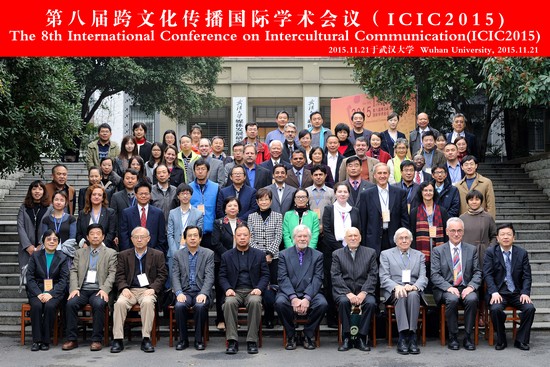Philosophy illuminates national image studies

The eighth International Conference on Intercultural Communication (ICIC 2015) was held from Nov. 21 to 22 at Wuhan University in Hubei Province.
Scholars called for philosophical perspectives in studies of the national image at the eighth International Conference on Intercultural Communication (ICIC 2015), held from Nov. 21 to 22 at Wuhan University in Hubei Province. The conference attracted scholars from 17 regions and countries who engaged in in-depth discussions about communication between ethnicities and groups, promotion of the national image, and intercultural communication.
The image of a nation is dynamic and ever-changing. Juergen Henze, director of the Training Center for Intercultural Competence at Humboldt University in Berlin, Germany, said that from the perspective of other cultures, changes to their perception of political, economic and social images of a country influence their evaluations in a positive or negative way.
Therefore, from a strategic planning angle, when building China’s national image, it is necessary to find aspects of the image that can best represent the development characteristics of China and are most worthy of promoting to the world, he said.
Fan Hong, executive director of the National Image Research Center at Tsinghua University, further expounded on Henze’s view, saying that it is feasible to capture a cultural value common to the “other” culture model, and then translate it into texts that are understandable and acceptable to audiences from different cultural backgrounds.
Shan Bo, deputy dean of the School of Journalism and Communication at Wuhan University, said that it is important to understand the perspective of others, participate in their methods of communication and think together with them to realize a meaningful dialogue structure featuring the question and answer model, thus building and promoting a dialogue-based image of China.
Such an image of China places emphasis on otherness and relevance, so it will be conducive to creating common ground for mutual understanding between different cultural groups, Shan said.
Fan proposed a three-dimensional communication model to deliver messages to target audiences on different levels.
At present, more and more Chinese media outlets have begun to “go global” in different forms. For example, China Radio International has set up more than 100 branches covering 44 languages across the world. Xinhua News Agency has launched a video website to disseminate what’s going on around the globe in a vivid manner. The Social Sciences in China Press under the Chinese Academy of Social Sciences (CASS) has unveiled the English e-paper of its flagship academic newspaper Chinese Social Sciences Today in the United States.
Jiang Fei, a research fellow from the Institute of Journalism and Communication Studies at CASS, noted that it is worth pondering whether these media outlets can influence local people in their discourse, daily communications and knowledge production.
With a growing number of people visiting China for travel or business purposes and the rapid development of the Internet and social network services, word-of-mouth has become more important, Fan said.
“Word-of-mouth is an important channel to boost the reputation of a country. It is reliable, convincing and most suitable to people of other countries,” she said.
Scholars pointed out that current research on the national image focuses too much on the application of strategies and skills in promoting the national image and foreign policy, while few take philosophy as a point of reference when researching the national image systematically.
Some scholars stressed the need to reflect philosophically on the objective nature and underlying values and concepts of the national image and the country involved, thereby extracting fundamental, universal and regular paradigms to provide scientific methodological guidance for the building of and future strategies for contemporary China’s national image.
Ming Haiying is a reporter at the Chinese Social Sciences Today.

 PRINT
PRINT CLOSE
CLOSE